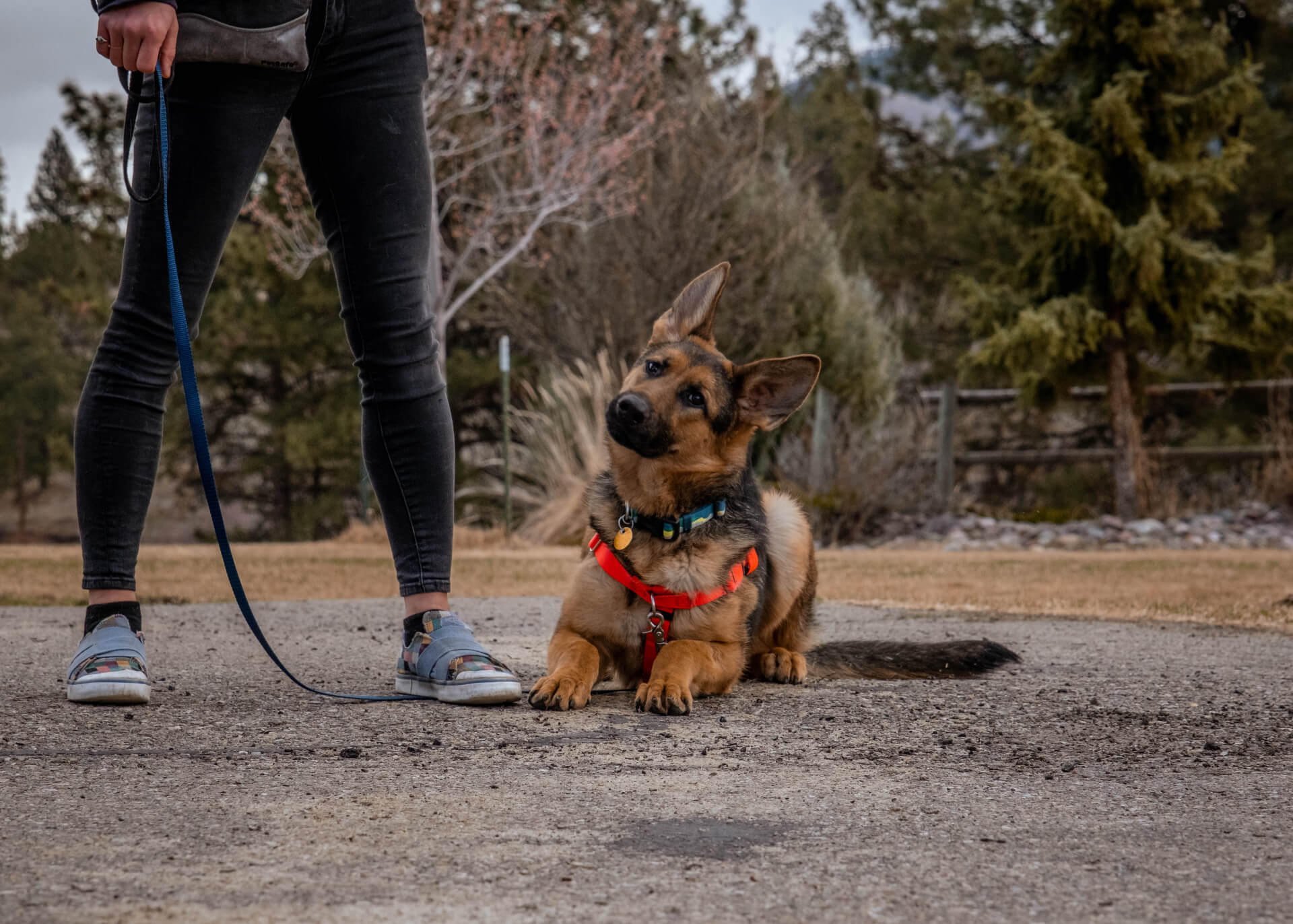
Fearful Dog Tips
Dogs that behave fearfully are very complex. No two fearful dogs are alike, and each dog’s pathway for success is different. Some dogs are “anxious,” which means they exhibit signs of fear and stress even when there are no obvious triggers around. Some dogs behave confidently but are quick to react or become fearful when specific triggers are present. Treatment of fear is best done with the guidance of a certified professional trainer or a behaviorist. Treatment is so sensitive that an improper approach can lead to an increase in fear, anxiety, and aggression.
Signs of Fear in Dogs
- biting
- muscles tensed
- ears back
- dilated pupils/eyes like saucers
- avoiding eye contact
- yawning
- lips pulled back/grinning
- panting/excessive salivating
- shaking
- barking, growling, or snapping
- weight shifted backwards
- tail tucked
- body held in a crouch/frozen body posture
- closed mouth
- tongue flicking
- pacing/trying to find an escape route
Prevent Scary Situations
The first step to treating fear is preventing your dog from having a fear response. If your dog is afraid of people or dogs, simply exposing her to more people and dogs can make the problem worse. If your dog is afraid of the vacuum cleaner, it will not help her to run the vacuum more often. Find ways to help your dog avoid her triggers entirely in everyday life. Then, with the proper behavior treatment plan, you can address those triggers in a more structured and positive way.
Fear is Often Treatable, Not Curable
Behaviors that stem from fear can be improved upon. But when a dog is chronically fearful, that dog will very likely remain fearful to some degree for the rest of her life. This is because many unmalleable factors such as genetics and socialization affect a dog’s temperament and their propensity to be fearful in certain situations. However, it is still worth every effort to treat fear. Treatment can improve your dog’s quality of life, allow your dog to have more opportunities in the world, and keep your dog and your community safe. A dog that is fearful and distrusting of people may never become a social butterfly. But she can learn to be calm instead of lunge and bark at them. And she can also form positive relationships with individual people over time. Just like with people, training will improve things but does not change the core of who a dog is. If you are an introvert, you can learn to confidently speak to a crowd but you will not become an extrovert. If you are afraid of spiders, you can go through measures so that you won’t scream or shut down when you see one. But you will likely never want to hold one in your hand. The fairest, kindest, and most effective thing to do for fearful dogs is to work with them in a positive way, but also accept them for who they are.
Treating Fear
The three factors to treating fear are: preventing fearful episodes through management, desensitization, and counter conditioning. Prevention was already discussed early on because it is the most important step. All three factors must happen in conjunction to successfully treat fear. If your dog is generally fearful or anxious, or has intense reactions when afraid, it is also beneficial to talk to your veterinarian about medication. Medication can help your dog feel more comfortable and can speed up the treatment process. In severe cases, progress may not be possible without medication.
- Desensitization refers to exposing your dog to the scary trigger at a level that does not cause fear. Then you can increase the level of exposure over time. This is a sensitive process because if the trigger is too overwhelming, desensitization will not happen and you can actually produce the opposite effect. Dogs can also become sensitized to triggers and be more fearful of them over time. This is why treatment of fear is best done with the guidance of a professional.
- Counter conditioning is the process of reducing the existing fear association with a trigger, by creating a positive association instead. A dog that is fearful of other dogs may growl when they see one due to their negative associations with dogs. If you give that dog a treat or a favorite toy every time she sees another dog, the sight of dogs can lead to positive associations instead. Counter conditioning can only be done when desensitization is also happening. If the process is done improperly, a dog can become more fearful, anxious, and aggressive towards a trigger, even with the best treats and toys available.
Never Punish Fear Responses
Do not punish your dog for showing any signs of fear such as growling, barking, or lunging at a person or object. It is hard not to react to your dog’s reaction! But scolding or punishing your dog for exhibiting a fear response can increase her fear, anxiety, and aggression over time. Remember that barking, lunging, cowering, etc. are all symptoms of fear. You must address the root of the problem, not simply attempt to suppress symptoms. If your dog is having a reaction, focus your efforts on removing your dog from the trigger and that will stop her from growling or barking. It is not effective to train a dog while they are already reacting or having a fear response. Doing so is as ineffective as telling a person to stop screaming while a spider is dangling in front of their face. Or worse, trying to force them to work through it while they are panicking. It is much better to walk away and try a different approach next time.
